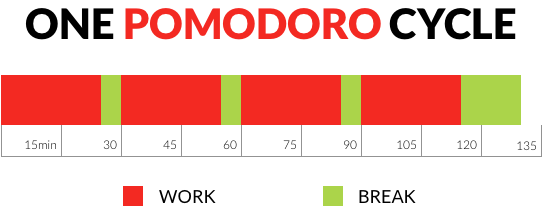With the increasing number of school districts closing amid the exponential spread of COVID-19, parents across the country are putting on their teacher’s hat for the next several weeks. While some districts are switching seamlessly to online education platforms, others are slower to adapt. Obstacles like equal internet access and functional devices for all students are dramatically limiting how much instructional time students will get at home.
Consequently, many parents feel the need to guide, and even supplement, their children’s education at home. If you’re a parent and haven’t overseen your child’s educational development since preschool, home-schooling your kids during coronavirus might seem like a really daunting task.
Luckily, in the age of infinite internet resources, companies like Khan Academy provide free instructional videos to break down the algebra concepts you swear you learned at some point. Writing, however, is a completely different story. Many students seem to “hate” writing in all of its forms, so keeping your child engaged with writing at home may prove to be the hardest challenge of parenting during coronavirus.
And there’s a lot at stake. Believe it or not, cultivating writing skills from a young age continues through high school, college and career. So, how can you get your child to “eat their vegetables” and not turn into a screen-time couch potato? Rest assured, you can do it!
Try following these five steps to help your child write better:
- FOLLOW A SET SCHEDULE.
Being away from school on an extended break usually means a lack of structure or routine. Kids can sleep in, play video games, eat whenever they want, and go to bed late. To their dismay, it’s not winter break or summer vacation; it’s only March and school is still in session for most districts, just in a different format.
Whether they realize it or not, your children thrive on routine. It’s important to keep that routine as much as possible. Structured writing sessions can be a key part. For example, setting a specific time of the day to work on writing projects can help your child get in the right mindset. The common technique of doing your most important task early in the day for the best focus is effective for that reason, so maybe encourage your kids to the “difficult” or not that fun projects first.
Before each writing session, you should:
- sit at a table or desk with a flat surface
- clear away any clutter that could be distracting
- turn off any nearby televisions or loud music
- put cellphones in another room
- have blank sheets of paper and pens handy.
Setting aside the scheduled time and having the right setup is half the battle. Next, help your child stay on task. The Pomodoro Method has been proven to be very effective for productivity of any type. And it’s simple. Even kids can do it! It involves setting a visible timer for 25 minutes and working on the task until the timer rings. If your child wants to continue working, they should take a short break and then set the timer for another 25 minutes. Every four interactions, you take a longer break.

This method can easily be adapted to a single 25-minute writing session every day. By consistently writing for the same amount of time, your child becomes accustomed to the familiarity and dependability of the session. The countdown timer also gives a slight feeling of urgency to get their ideas down on paper, thus increasing productivity.
- USE CREATIVE PROMPTS.
Many students dread writing due to the monotony and rigor of their academic assignments. From English essays to lab reports, there can be little room for creativity in their writing. As a result, students typically spend their leisure time watching TV or playing video games, activities much more mindless than writing. If your child is math- or science-oriented, you may have an even harder time pushing regular writing sessions as a necessity.
The bottom line is that your child most likely associates writing with boredom, frustration, and criticism.
In order to break that association, you need to reintroduce the creativity back into writing. There are countless styles and genres of writing that students don’t get to try in middle and high school if they haven’t taken a creative writing class. From fiction and poetry to memoirs and plays, your child is bound to like one genre or another. You can choose creative prompts from lists or come up with prompts from scratch. The key is to make the writing session as different from academic writing as possible.
Try out one of the prompts below to get started:
- Write an unrhymed poem about rhyme
- If you travel back in time and sway a person about one decision, what person and what decision would you choose? Why?
- Write a dialogue that takes place between two people arguing about something silly.
- What magical or mythical creature do you hope exists? Why? If you met one, what would you do?
- Describe a scene in which a person is trapped in a subway car.
- WRITE WITH YOUR CHILD.
Having your child at home for the next several weeks gives you the opportunity to spend more time together. Even if you’re busy working from home or tending to your other children, you should try your best to set aside 25 minutes a day to sit down and write with your child. Leading by example is a simple answer to how parents can help with writing at home.
It’s possible you haven’t written creatively in years or lack the confidence to try, but that’s the beauty of the writing session. It will not be graded or judged. Only you and your child will read it.
Writing consistently has been proven to reduce stress, so it could be a win-win situation for both you and your child. Participating in the 25-minute exercise is a sign of support and encouragement in a time of uncertainty.

- REVIEW PROGRESS MADE.
After completing a writing session, it’s important to take an additional few minutes to reflect on what you and your child have written. Writing isn’t just an action; it’s an experience. Your child may have felt a range of emotions while responding to the prompt, so you should have a short conversation about the experience.
Giving and receiving positive and constructive feedback are great skills to practice outside of an academic setting because students often react negatively to teacher feedback and don’t take peer feedback seriously. These simple writing activities at home can be more effective teaching tools than you and your child realize.
Consider these questions during your post-session conversation:
- What was easy about this exercise?
- What was challenging?
- What did you enjoy?
- What didn’t you enjoy?
- How have you improved from yesterday?
- How did the exercises/prompts differ from one another?
- SET FEASIBLE GOALS.
One of the ways to ensure these writing sessions continue to be productive and consistent is to plan ahead. Setting goals based on the progress conversation can conclude the session effectively. Your child could plan what prompt to respond to the next day, what mistakes in grammar or sentence structure to fix, or what confidence level to work toward among many others. Encourage your child to write 1-2 goals at the bottom of the paper to more concretely set them. Examples of these writing goals will vary depending on the grade level of your child, they can be as easy as “Add a period at the end of each sentence” or a little bit more complex as “Demonstrate organization, unity, and coherence by using implied transitions and sequencing.” You should also set your own goals to lead by example and reflect on your own progress.

 Help
Help